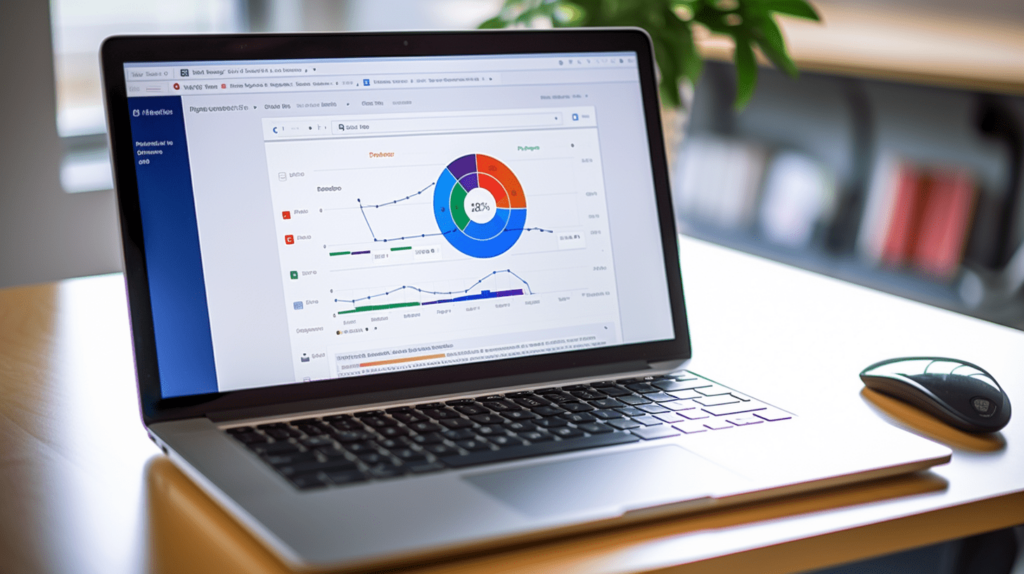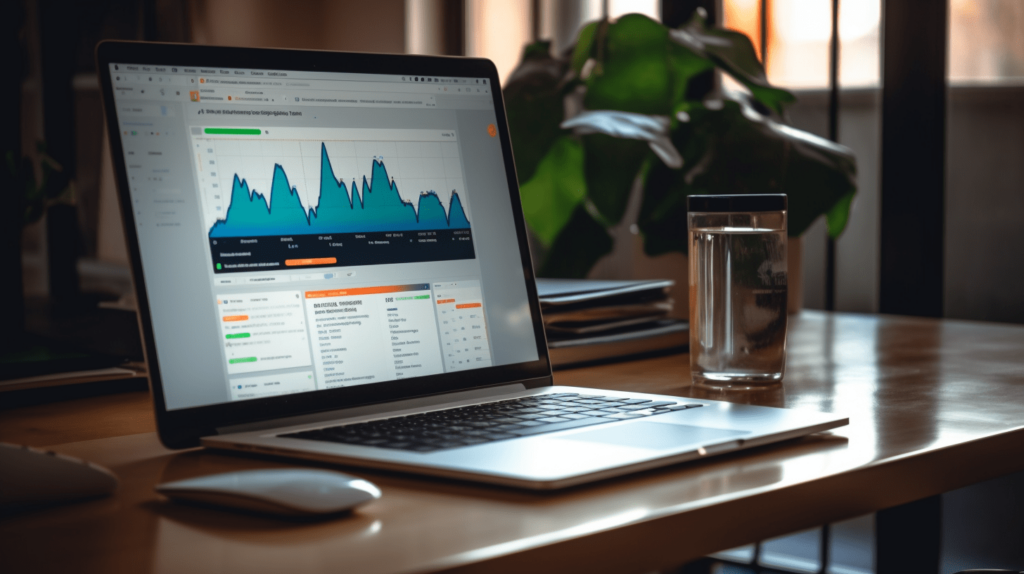
In today's digital world, speed is everything. Users expect websites to load quickly and smoothly, and Google has taken these expectations seriously. Since 2018, the tech giant has integrated website loading speed into its algorithm as one of its key ranking factors. In this context, Google penalizes slow pages, both in desktop and mobile view, which underlines the need to optimize the speed of your website.
Learn more about Google Pagespeed.
Importance of website speed for Google
Google has a clear message: slow websites will not be tolerated. The loading speed of a website is not only a decisive factor for a positive user experience, but also a critical factor for a better ranking in the search results. A fast website can help achieve a low bounce rate and increase visibility in search results, which ultimately brings more visitors to your site.
Influence of loading speed on the ranking
The loading speed of a website has a direct influence on its ranking in the search results. Larger files take more time to load, which can affect the overall loading time of the website. Therefore, it is crucial to reduce the file size to improve the loading time of the website and achieve a better ranking. In addition, images often play the largest part of a website's file size, and optimizing them can significantly reduce load time without compromising quality.
Google Pagespeed optimization, strategies for improvement
In today's digital landscape, it's imperative that your website loads quickly and efficiently. Here are some proven strategies that can help you improve the speed of your website and provide a better user experience.
2.1 Minimizing the loading time
The loading time of a website is a decisive factor for the user experience and the ranking in the search results. A fast loading time can help to achieve a low bounce rate and a better ranking in the search results. To minimize loading time, you should remove unnecessary lines of code, optimize scripts and minimize the use of external resources.
2.2 Reducing the file size
Larger files take longer to load, which can affect the overall loading time of the website. To reduce file size, you should remove unnecessary characters from your code, use compressed file formats and optimize multimedia elements. This can not only improve the loading time of your website, but also reduce bandwidth usage.
2.3 Optimization of images
Images often make up the largest part of a website's file size. Effective image optimization can significantly reduce loading time without compromising quality. Use techniques such as compressing images, using responsive images and choosing the right file format to minimize loading time.
2.4 Caching
Caching is a technology in which pages or elements that have already been loaded are saved in the browser so that they can be loaded more quickly when they are called up again. By implementing caching technologies, you can further improve the loading time of your website. This includes setting appropriate cache expiry times and using browser caching.
Google PageSpeed Insights
In a constant effort to improve the web experience, Google offers a useful tool called Google PageSpeed Insights. This tool allows website owners to calculate and analyze the load time of a URL in order to optimize the performance of their website. Let's dive deeper into the functionalities and benefits of this tool.
3.1 What is Google PageSpeed Insights?
Google PageSpeed Insights is an SEO tool that analyzes and calculates the loading time of a URL in just one step. It integrates real user data from the Chrome User Experience (CrUX) and ratings from Lighthouse, a tool that evaluates the accessibility, performance and usability of a website. By entering your URL in the field provided, you get a detailed analysis of website performance, including a performance score on a scale of 0 to 100. This allows for a quick and easy evaluation of website performance.
3.2 What does „fast“ mean for Google PageSpeed Insights?
In the world of search engine optimization, loading speed has long been an important factor. „Fast“ in terms of Google PageSpeed Insights refers not only to loading speed, but also to other aspects such as page size, response time and download speed. These factors are included in Google's evaluation of a website and play a crucial role in optimizing website performance.
3.3 Google PageSpeed Insights - Three factors with high optimization potential
Google PageSpeed Insights provides a quick overview of performance, potential issues and available solutions for specific URLs or entire domains. In this section, we will explain three areas that play a crucial role in optimizing website speed and have a high potential for optimization.
Practical tips for optimization
To effectively improve the speed of your website, it's important to focus on certain areas that have a big impact on load time. Here are some practical tips that can help you optimize your website and provide a better user experience.
4.1 Image optimization
Images are often the biggest resource guzzlers on a website. However, effective image optimization can help to significantly reduce loading time. Here are some tips:
- Use of suitable formatsUse formats such as JPEG 2000 and JPEG XR, which are easier to compress without visible loss of quality.
- Compression before uploadingCompress all images before uploading them to the website to reduce the file size.
- Use of image editing programsUse programs such as Photoshop to save images for the web, reducing the resolution without compromising quality.
4.2 Good cache
Caching can significantly reduce data transfer time, resulting in faster page speed. Here are some tips on how to use the cache effectively:
- Setting an expiry dateSet an expiration date for website files to control how long they are stored in the browser.
- Use of Mod_expiresUse Mod_expires for websites hosted on Apache servers to effectively control the browser cache.
- Adjustment of the storage timeAdjust the storage time for different file types to ensure optimum performance.
4.3 Server at the cutting edge
Choosing the right server can have a big impact on the speed of your website. Here are some tips on how to get your Google Pagespeed to a good level:
- Avoidance of shared hosting platformsAvoid hosting platforms with limited resources that can affect the loading speed.
- Upgrade of server resourcesConsider upgrading server resources such as CPU or memory to improve performance.
- Adjusting the hardware settingsConfigure the hardware settings according to the requirements of your website to ensure optimum performance.
5.1 Privacy policy
Before you fill out the form, we would like to point out that your personal data will be treated with the utmost care. By submitting the form, you consent to the processing and storage of the personal data entered in accordance with our privacy policy. We attach great importance to the protection of your data and use it exclusively for the purpose of contacting you and providing the requested service.

6. expert opinions and resources
Optimizing your website speed can be a complex task, but luckily there are many resources and expert opinions that can help you understand and navigate the process. Here are four posts that dive deeper into the topic and offer valuable insights and tips:
- Google for Developers provides a platform to analyze and optimize your website with PageSpeed tools. You can get your PageSpeed score and use PageSpeed's suggestions to make your website faster. Read more about it on their official website.
- The HubSpot Blog offers a starter guide to using Google PageSpeed Insights. The article explains the process of using the tool and provides a comprehensive report with data and optimization suggestions. Learn more in their Blog post.
- Neil Patel, a well-known digital marketing influencer, explains how to achieve a perfect score of 100% on Google PageSpeed Insights and why this is important. Read his detailed Blog post for further information.
- Semrush, a well-known platform for online visibility management, offers a post explaining what Google PageSpeed Insights is and how to improve your score. Learn more in their Blog post.
In addition to our post, these posts provide a wealth of information and resources that can help you optimize the speed of your website and provide a better user experience.
